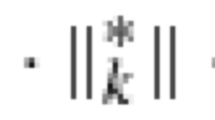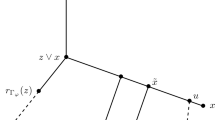Abstract
One hundered years ago exactly, in 1906, Hartogs published a celebrated extension phenomenon (birth of Several Complex Variables), whose global counterpart was understood later: Holomorphic functions in a connected neighborhood V(∂Ω) of a connected boundary ∂Ω ⋐ℂn ≥ 2) do extend holomorphically and uniquely to the domain ό. Martinelli, in the early 1940’s, and Ehrenpreis in 1961 obtained a rigorous proof, using a new multidimensional integral kernel or a short\(\bar \partial \) argument, but it remained unclear how to derive a proof using only analytic discs, as did Hurwitz (1897), Hartogs (1906), and E. E. Levi (1911) in some special, model cases. In fact, known attempts (e.g., Osgood, 1929, Brown, 1936) struggled for monodromy against multivaluations, but failed to get the general global theorem.
Moreover, quite unexpectedly, in 1998, Fornœss exhibited a topologically strange (nonpseudoconvex) domain όF ⊂ ℂ2 that cannot befitted in by holomorphic discs, when one makes the additional requirement that discs must all lie entirely inside όF. However, one should point out that the standard, unrestricted disc method usually allows discs to go outside the domain (just think of Levi pseudoconcavity).
Using the method of analytic discs for local extensional steps and Morse-theoretical tools for the global topological control of monodromy, we show that the Hartogs extension theorem can be established in such a way.
Similar content being viewed by others
References
Andreotti, A. and Grauert, H. Théorèmes de finitude pour la cohomologie des espaces complexes,Bull. Soc. Math. France 90, 193–259, (1962).
Andreotti, A. and Hill, C. D. E. E. Levi convexity and the Hans Lewy problem, I and II,Ann. Scuola Norm. Sup. Pisa, Sci. Fis. Mat. 26, 325–363, 747–806, (1972).
Bedford, E. Review of [10],Mathematical Reviews, available on MathScinet.
Bochner, S. Analytic and meromorphic continuation by means of Green’s formula,Ann. of Math. (2) 44, 652–673, (1943).
Brown, A. B. On certain analytic continuations and analytic homeomorphisms,Duke Math. J. 2(1), 20–28, (1936).
Chirka, E. M. and Stout, E. L. Removable singularities in the boundary. Contributions to complex analysis and analytic geometry,Aspects Math, E26, Vieweg, Braunschweig, 43–104, (1994).
Demailly, J.-P. Analytic and algebraic geometry, lecture notes available at: http://www- - fourier. ujf - - grenoble. fr/∼demailly.
Ehrenpreis, L. A new proof and an extension of Hartogs’ theorem,Bull. Amer. Math. Soc. 67, 507–509, (1961).
Fichera, G. Caratterizzazione della traccia, sulla frontiera di un campo, di una funzione analitica di più variabili complesse,Atti Accad. Naz. Lincei Rend. Cl. Sci. Fis. Mat. Nat. (8) 22, 706–715, (1957).
Fomæss, J. E. The disc method,Math. Z 227(4), 705–709, (1998).
Fueter, R. Über einen Hartogs’schen Satz,Comm. Math. Helv. 12, 75–80, (1939).
Gompf, R. E. and Stipsicz, A. E.4-Manifolds and Kirby Calculus, Graduate Studies in Mathematics, Vol. 20, AMS Providence, Rhode Island, (1999).
Grauert, H. Theory of q-convexity and q-concavity, inSeveral Complex Variables VII, Grauert, H., Peternell, Th., Remmert, R., Eds., Springer-Verlag, (1994).
Hartogs, F.Einige Folgerungen aus der Cauchyschen Integralformel bei Funktionen mehrerer Veränderlichen, Bayerische Akademie der Wissenschaften. Mathematish-Physikalisch Klasse,36, 223–292, (1906).
Henkin, G. M.The Method of Integral Representations in Complex Analysis, (Russian), Current problems in mathematics. Fundamental directions7, 23–124, 258, Itogi Nauki i Tekhniki, Akad. Nauk SSSR, Vsesoyuz. Inst. Nauchn. i Tekhn. Inform, Moscow, (1985).
Henkin, G. M. and Leiterer, J. Theory of functions on complex manifolds,Mon. Math. 79, Birkhäuser, Basel-Boston, Mass., 226 pp, (1984).
Henkin, G. M. and Leiterer, J. Andreotti-Grauert theory by integral formulas,Progr. Math. 74, Birkhäuser, Boston-Basel, (1988).
Henkin, G. M. and Michel, V. Principe de Hartogs dans les variétés CR,J. Math. Pures Appl. (9) 81(12), 1313–1395, (2002).
Hirsch, M. W.Differential Topology, Graduate Texts in Mathematics,33, Springer-Verlag, Berlin, 222, (1976).
Hörmander, L.An Introduction to Complex Analysis in Several Variables, Van Nostrand, Princeton 1966, 3rd ed., North Holland Publ., Amsterdam-New York, (1990).
Hurwitz, A. Überdie Entwicklung der allgemeinen Theorie der analytischen Funktionen in neuerer Zeit, in Proc. 1st International Congress of Mathematicians, Zürich, 91–112, (1897–1898).
Jarnicki, J. and Pflug, P.Extension of Holomorphic Functions, De Gruyter Expositions, in Mathematics, 34, De Gruyter, Berlin, 487, (2000).
Jöricke, B. and Porten, E.Hulls and analytic extension from nonpseudoconvex boundaries, U.U.M.D. Report2002(19), Uppsala University, 38 pp, (2002).
Kneser, H. Die Randwerte einer analytischen Funktion zweier Veränderlichen,Monats. f. Math. u. Phys. 43, 364–380, (1936).
Levi, E. E. Sulle ipersuperficie dello spazio a 4 dimensioni che possono essere frontiera del campo di esistenza di una funzione analitica di due variabili complesse,Annali di Mat. (3) 18, 69–79, (1911).
Lieb, I. and Michel,J. The Cauchy-Riemann Complex. Integral Formulae and Neumann Problem, Aspects of Mathematics, E34. FriEd., Vieweg & Sohn, Braunschweig, 362, (2002).
Martinelli, E. Alcuni teoremi integrali per le funzioni per le funzioni analitiche di più variabili complesse,Mem. delta R. Accad. d’Italia 9, 269–283, (1938).
Martinelli, E. Sopra una dimostrazione di R. Fueter per un teorema di Hartogs,Comm. Math. Helv. 15, 340–349, (1942–1943).
Merker, J. and Porten, P.Holomorphic Extension of CR Functions, Envelopes of Holomorphy and Removable Singularities, International Mathematics Research Surveys, Vol.2006, Article ID 28925, 287, math. CV/ 0701531.
Merker, J. and Porten, P. The Hartogs extension theorem on (n −1)complete complex spaces, http:// arxiv.org/abs/0704.3216.
Milnor, J.Morse Theory, Based on lectures notes by M. Spivak and R. Wells, Annals of mathematical Studies, No. 51, Princeton University Press, Princeton, NJ. 153, (1963).
Osgood, W. F.Lehrbuch der Funktionentheorie, Bd II, B.G. Teubner, Leipzig, (1929).
Range, M.Holomorphic Functions and Integral Representations in Several Complex Variables, Graduate Texts in Mathematics,108, Springer-Verlag, New York, 386, (1986).
Range, M. Extension phenomena in multidimensional complex analysis: Correction of the historical record,Math. Intelligencer 24(2), 4–12, (2002).
Struppa, D.The First Eighty Years of Hartogs’ Theorem, Geometry Seminars, 1987–1988, Bologna 1987–1988, 127–209, Univ. Stud. Bologna, Bologna, (1988).
Author information
Authors and Affiliations
Corresponding author
Additional information
Communicated by Steven Krantz
Rights and permissions
About this article
Cite this article
Merker, J., Porten, E. A Morse-theoretical proof of the Hartogs extension theorem. J Geom Anal 17, 513–546 (2007). https://doi.org/10.1007/BF02922095
Received:
Issue Date:
DOI: https://doi.org/10.1007/BF02922095




